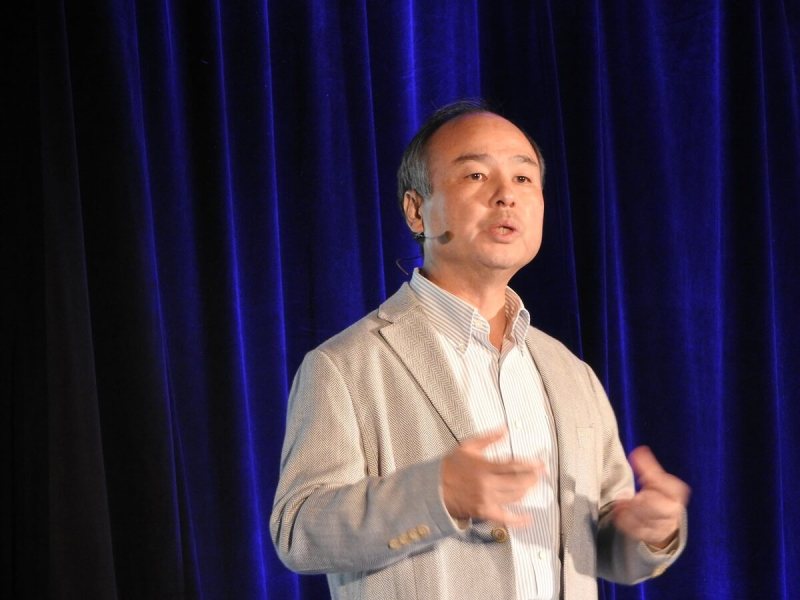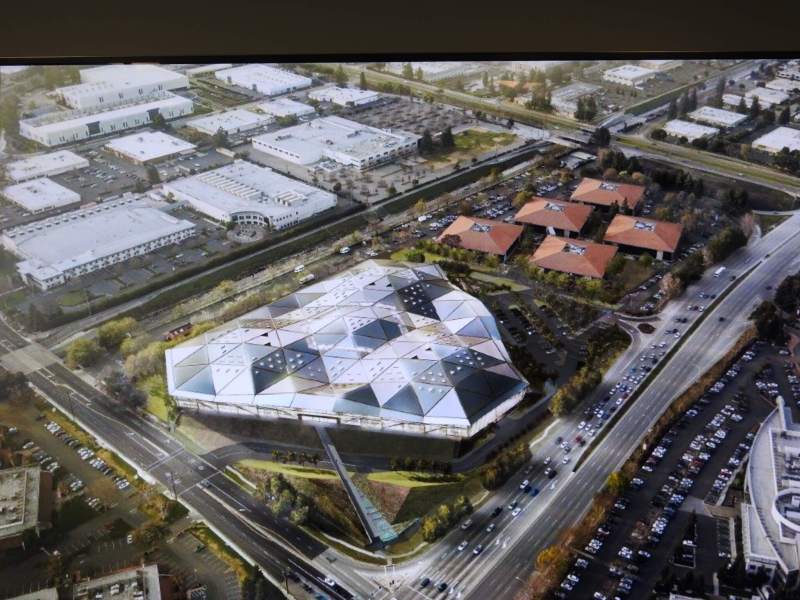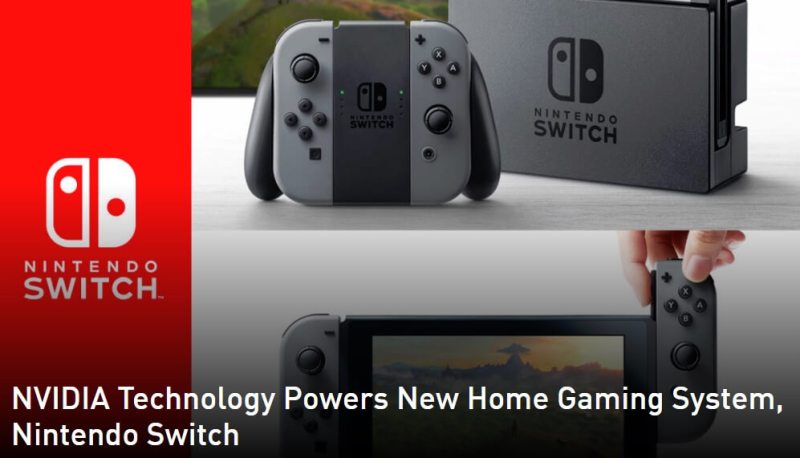Nvidia CEO Jen-Hsun Huang says that Nvidia is in the midst of a transition from being a graphics chip company to an artificial-intelligence platform maker. The company still powers graphics chips in laptops and gaming PCs with virtual reality headsets. But it is also supplying the computing horsepower for deep learning neural networks, self-driving cars, and upcoming devices, such as the Nintendo Switch game console.
I caught up with Huang after Nvidia reported impressive numbers for its third fiscal quarter results on Thursday. But I decided to use my short time with him talking about the important stuff.
We didn’t dwell on the financials. Instead, I asked five questions about the risks of A.I., the blurring of science fiction and tech reality, Nvidia’s role in developing the Nintendo Switch, competition with Intel in artificial intelligence, and his views regarding Donald Trump.
Here’s an edited transcript of our interview.
AI Weekly
The must-read newsletter for AI and Big Data industry written by Khari Johnson, Kyle Wiggers, and Seth Colaner.
Included with VentureBeat Insider and VentureBeat VIP memberships.

Above: SoftBank CEO Masayoshi Son sees the singularity coming.
VentureBeat: I was talking to Masayoshi Son of SoftBank a little while ago. He said he wants to invest for the Singularity (when AI is smarter than collective human intelligence). He seems to think it’s coming up soon. What’s your view like? We want better A.I. for self-driving cars, but we don’t want to build Skynet, do we?
Jen-Hsun Huang: I believe that the future is about having a whole bunch of A.I., not one A.I. We’re all going to have our own personal A.I. We’ll have A.I. for many fields of medicine, for many fields of manufacturing. We’ll have different A.I. for different parts of our business. We’ll have marketing A.I., supply chain A.I., forecasting A.I., human resources A.I. We’ll have a lot of different A.I. in the future. They’re going to be infused into the software packages of today.
A.I. will make it possible for the Internet to directly engage people in the real world, through robotics and drones and little machines that will do smart things by themselves. Cars — of course — golf carts, bicycles. There will be all kinds of A.I.s making machines safer, easier to use, and more available. For the next 10 years, we’ll see a ton of that stuff.
A.I. is going to increase in capability faster than Moore’s Law. I believe it’s a kind of [a] hyper Moore’s Law phenomenon because it has the benefit of continuous learning. It has the benefit of large-scale networked continuous learning. Today, we roll out a new software package, fix bugs, update it once a year. That rhythm is going to change. Software will learn from experience much more quickly. Once one smart piece of software on one device learns something, then you can over-the-air (OTA) it across the board. All of a sudden, everything gets smarter.
Hyper Moore’s Law innovation is upon us. I think A.I. is going to be a big part of the reasons why that happens.

Above: A concept rendering of Nvidia’s headquarters.
VB: Do you feel like you have to follow a lot of science fiction to figure out where A.I. is going to go?
Huang: I don’t really have to watch science fiction because I’m in science fiction today. This is a company that’s close to the leading edge of what science fiction can be. Virtual reality, all the A.I. work we do, all the robotics work we do — we’re as close to realizing science fiction as it gets.
VB: There was a day when it seemed like you were happy with just serving the PC gaming market. The console was a less attractive market. I wonder why you guys went after the Nintendo Switch and how you accomplished that.
Huang: We’re dedicated to the gaming market and always have been. Some parts of the market, we just weren’t prepared to serve them. I was fairly open about how, when this current generation of consoles was being considered, we didn’t have x86 CPUs. We weren’t in contention for any of those. However, the other factor is whether we could really make a contribution or not. If a particular game console doesn’t require our special skills, what we can uniquely bring, then it’s a commodity business that may not be suited for us.
In the case of Switch, it was such a ground-breaking design. Performance matters because games are built on great performance, but form factor and energy efficiency matter incredibly because they want to build something that’s portable and transformable. The type of gameplay they want to enable is like nothing the world has so far. It’s a scenario where two great engineering teams, working with their creative teams, needed to hunker down. Several hundred engineering years went into building this new console. It’s the type of project that really inspires us, gets us excited. It’s a classic win-win.

Above: Nvidia’s custom Tegra chip powers the Nintendo Switch.
VB: What’s your reaction to Intel in the space, buying Nervana and Movidius and building the Xeon Phi as well? It seems like that’s a rival platform.
Huang: One of our big themes is our transformation from a chip company to a computing-platform company. Our computing-platform architecture — what we call GPU computing — is about combining instruction throughput processing from a CPU with data throughput processing from the GPU. It’s taken us 10 years to create the architecture, all the algorithms, all the libraries, and all the tools — working with developers all over the world to understand how to use it. It’s been a long journey.
Computing platforms that are used by developers all over the world don’t come along very often. There aren’t that many broad-based computing platforms. Our strategy is to be a computing-platform company. One of the applications we’ve dedicated ourselves to pioneering is deep learning. We’ve invested billions of dollars into it now. We’re coming up on seven years of investment in this area. We offer an end-to-end deep learning platform. The breadth of our solution, the capability of our solution, and the reach of our solution — whether it’s in every single cloud, every single server company — it’s a great investment, something that took a long time.
A computing platform needs to be capable of being backwards compatible on the one hand, supporting a whole bunch of industry applications. It has to have the ability to support both computational approaches, numerical approaches, what we used to do, as well as data science approaches. I believe in computational science, partial differential equations, linear algebra and so on, as well as data science, deep learning approaches. Those two are going to combine. It won’t just be one or the other.
We created an architecture that’s mindful of all these things. As a result, you can run more applications on our platform. As you know, the math works simply. The more applications you can run on a computing platform, the more cost-effective that platform becomes — to a point where even if you give away the hardware, it’s more expensive than a computing architecture that has more applications on it.
We’ve seen this movie before. The singular idea is having apps matter. We have just about every app on the planet that requires data throughput computing running on our platform. That’s our approach.
VB: Do you have any reaction to Donald Trump’s election?
Huang: I guess my reaction is that we have to be mindful of bringing everybody along in this society. This is the voice of the people. I’m optimistic that the institution of the United States will continue to support diversity, be mindful of tolerance, and hopefully help us to not forget that there are people in every part of our country that we need to bring along.
I’m optimistic about the outcome, irrespective of how on balance I prefer a more liberal government. I have confidence in the resilience of the institutions. We’ll find a way through and find a way forward.
VentureBeat's mission is to be a digital town square for technical decision-makers to gain knowledge about transformative enterprise technology and transact. Learn More

